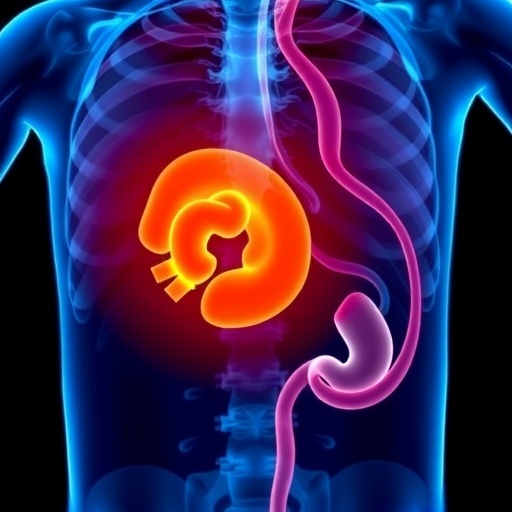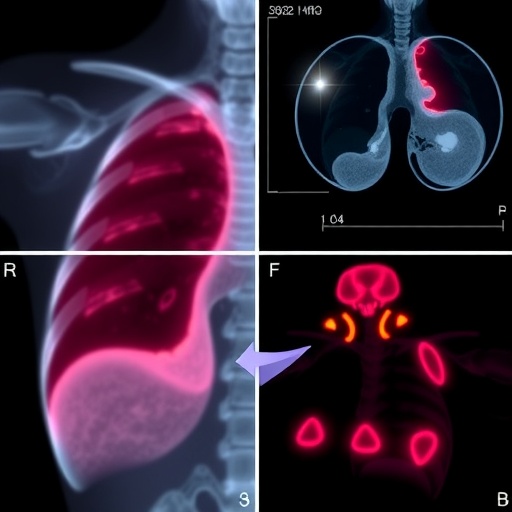In the ever-evolving field of oncology, the conceptualization of treatment strategies is paramount to patient outcomes. A recent survey study conducted among German physicians with oncological expertise sheds critical light on an often overlooked yet fundamentally significant concept—the lines of therapy (LOT). This study reveals not only a varying degree of understanding among physicians but also highlights the urgent necessity for a standardized framework in applying LOT in clinical practice, which can substantially influence treatment efficacy and patient communication.
Lines of therapy represent a cornerstone in oncology decision-making, delineating a sequence of therapeutic interventions based on disease progression and patient response. Despite its crucial role, LOT remains ambiguously defined, creating a chasm of inconsistency that risks miscommunication between healthcare providers and patients. The study’s authors embarked on an ambitious survey to decode physicians’ interpretations of LOT and to identify the key triggers that prompt transitions between different therapeutic lines.
The research deployed a snowball sampling technique to reach a broad spectrum of physicians embedded within German oncological networks. Among the 60 respondents, the majority held pivotal roles, such as senior or chief physicians, and were actively participating members of tumor boards. This cohort’s engagement underscores the study’s relevance, as these physicians make high-stakes decisions impacting cancer treatment trajectories daily.
One of the unified conclusions across respondents was the perception of LOT as a structured, planned approach aimed at achieving a defined therapeutic goal. This consensus highlights the conceptual backbone of LOT’s function in clinical oncology—beyond a mere sequence of treatments, LOT signifies a strategic roadmap designed to optimize patient outcomes while managing disease progression pragmatically.
However, discrepancies emerged when dissecting what specific clinical events warrant a switch from one line of therapy to another. There was strong agreement that disease progression, recurrence, and the advent of metastases serve as primary catalysts for transitioning between LOTs. These factors are integral in indicating therapeutic failure or diminished efficacy, necessitating a reassessment and initiation of alternative systemic or localized treatments.
Intriguingly, the study pointed out a notable divergence in opinions concerning the role of severe side effects as a trigger for LOT change. While a majority acknowledged this as a critical factor, the variability in responses signals underlying complexities in clinical judgment, balancing toxicity management against therapeutic benefit.
Furthermore, the survey unveiled contentious views on whether local therapeutic interventions, such as surgery, should be classified as independent lines of therapy. The debate around local treatments challenges the traditional systemic therapy-focused understanding of LOT and signals an avenue where oncological practice and definitional clarity are misaligned.
This ambiguity is not just an academic concern but bears substantial implications for treatment planning and interprofessional communication. Without a universally accepted definition and standardized criteria, the risk of inconsistent treatment strategies and patient misunderstandings increases. This scenario might contribute to suboptimal care pathways and potential disparities in outcomes across clinical settings.
Physicians’ diverse interpretations expose the broader issue of therapeutic sequencing complexities in oncology. As cancer treatments become increasingly personalized—incorporating targeted therapies, immunotherapies, and multimodal interventions—the LOT concept must evolve to encapsulate these nuances adequately.
The study’s usage of consensus metrics like the Gini Mean Difference and normalized entropy allowed for a rigorous quantitative assessment of agreement levels among respondents. These advanced statistical tools underscore the methodological strength underpinning the survey and lend credibility to the findings regarding heterogeneity in LOT perception.
Moreover, the findings emphasize the critical need for oncology societies and regulatory bodies to spearhead efforts aimed at refining and standardizing LOT definitions. Such measures could involve developing clear guidelines that specify clinical milestones driving LOT transitions, integrating molecular and clinical response parameters, and clarifying the role of local therapies within the therapeutic sequence.
Standardization efforts would likely enhance multidisciplinary communication within tumor boards, where consensus is essential to formulate patient-centric treatment plans. Consistent understanding of LOT could streamline decision-making processes, reduce ambiguity in treatment goals, and ultimately translate into improved clinical outcomes.
In addition to professional clarity, patient education stands to benefit significantly from a standardized LOT concept. Patients navigating complex oncology treatments require transparent explanations of their therapeutic journey. A universal framework would facilitate clearer dialogues regarding treatment expectations, potential transitions, and prognosis, fostering patient empowerment and adherence.
This survey thus acts as a clarion call for the oncological community to address the grey areas surrounding LOT. Recognizing both consensus and contention points can guide future research, policy-making, and educational initiatives that align physicians’ conceptual frameworks and clinical practices.
In summary, this novel investigation into physicians’ perceptions of the lines of therapy concept unravels the intricate balance between clinical judgment, definitional clarity, and therapeutic strategy in cancer care. It signifies that while there is a foundational agreement on LOT’s purpose, the variability in defining its application mirrors the complexity and rapid evolution of oncology therapeutics.
As the field progresses, addressing these inconsistencies is not merely theoretical but a practical necessity to optimize cancer management. Through collective efforts in standardization, clinical guidelines can better support physicians, improve patient outcomes, and reduce the risk of misunderstandings inherent in the multifaceted realm of cancer treatment sequencing.
The study paves the way for future investigations to expand this inquiry globally, encompassing diverse oncology practices and settings. Such research could further refine the LOT concept, ensuring it remains a dynamic and effective tool in the clinician’s armamentarium to combat cancer in the 21st century.
Subject of Research: Physicians’ understanding and application of the lines of therapy concept in cancer treatment within German oncological networks.
Article Title: Reviewing the lines of therapy-concept in cancer treatment: a survey study among physicians.
Article References:
Falchetto, L.M.M., Bender, B., Erhard, I. et al. Reviewing the lines of therapy-concept in cancer treatment: a survey study among physicians. BMC Cancer 25, 1439 (2025). https://doi.org/10.1186/s12885-025-14940-0
Image Credits: Scienmag.com
DOI: https://doi.org/10.1186/s12885-025-14940-0





